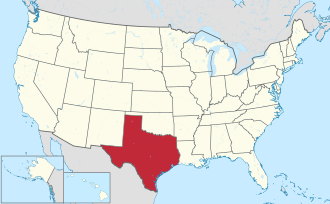2020 census
Victoria County, Texas – Racial and ethnic composition
Note: the US Census treats Hispanic/Latino as an ethnic category. This table excludes Latinos from the racial categories and assigns them to a separate category. Hispanics/Latinos may be of any race.| Race / Ethnicity (NH = Non-Hispanic) | Pop 2000 [20] | Pop 2010 [21] | Pop 2020 [22] | % 2000 | % 2010 | % 2020 |
|---|
| White alone (NH) | 44,490 | 41,564 | 39,330 | 52.91% | 47.89% | 43.07% |
| Black or African American alone (NH) | 5,137 | 5,190 | 5,230 | 6.11% | 5.98% | 5.73% |
| Native American or Alaska Native alone (NH) | 197 | 199 | 425 | 0.23% | 0.23% | 0.23% |
| Asian alone (NH) | 635 | 860 | 2,404 | 0.76% | 0.99% | 1.52% |
| Pacific Islander alone (NH) | 9 | 16 | 46 | 0.01% | 0.02% | 0.04% |
| Other race alone (NH) | 39 | 109 | 698 | 0.05% | 0.13% | 0.25% |
| Mixed or multiracial alone (NH) | 622 | 742 | 7,961 | 0.74% | 0.85% | 2.14% |
| Hispanic or Latino (any race) | 32,959 | 38,113 | 42,931 | 39.20% | 43.91% | 47.01% |
| Total | 84,088 | 86,793 | 91,319 | 100.00% | 100.00% | 100.00% |
As of the 2020 United States census, 91,319 people, 32,520 households, and 22,172 families resided in the county.
As of the census [23] of 2000, 84,088 people, 30,071 households, and 22,192 families lived in the county. The population density was 95 people per square mile (37 people/km2). The 32,945 housing units had an average density of 37 units per square mile (14 units/km2). The racial makeup of the county was 74.22% White, 6.30% Black or African American, 0.53% Native American, 0.77% Asian, 0.04% Pacific Islander, 15.92% from other races, and 2.22% from two or more races. About 39.20% of the population were Hispanic or Latino of any race; 16.2% were of German, 6.2% American, and 5.6% English ancestry according to Census 2000, and 73.3% spoke English and 25.5% Spanish as their first language.
Uf the 30,071 households, 37.2% had children under 18 living with them, 56.7% were married couples living together, 12.7% had a female householder with no husband present, and 26.2% were not families. Around 22.4% of all households were made up of individuals, and 9.1% had someone living alone who was 65 or older. The average household size was 2.75 and the average family size was 3.23.
In the county, the age distribution was 29.1% under 18, 9.2% from 18 to 24, 28.1% from 25 to 44, 21.5% from 45 to 64, and 12.0% who were 65 or older. The median age was 34 years. For every 100 females, there were 94.9 males. For every 100 females 18 and over, there were 91.7 males.
The median income for a household in the county was $38,732, and for a family was $44,443. Males had a median income of $35,484 versus $21,231 for females. The per capita income for the county was $18,379. About 10.50% of families and 12.90% of the population were below the poverty line, including 17.20% of those under 18 and 11.70% of those 65 or over.



